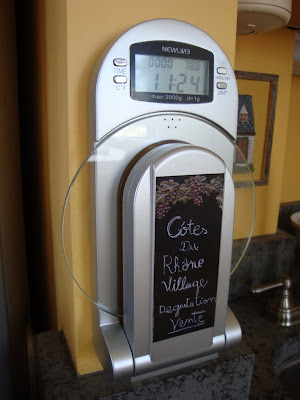Well, well, well. After four endless days of waiting, I learned last Thursday that my Cathedral Toasting Loaf had taken fourth place in the "specialty breads" category at the Minnesota State Fair baking competition. There were 35 entries in my category and more than 2,800 in the entire bread competition.
Beyond the adulation of my peers and the media, I'm the proud recipient of a pink ribbon* and a bounty of $4.00! Huge pride here.
I've posted the recipe below. When I get the time, I'll convert the metric weights to U.S. measures; however, we Americans really need to go metric. Once you get used to it, it's astoundingly easier than the stupid system we use now.
*The Fair people actually are defying convention by issuing a pink ribbon for fourth place. Check out http://wiki.answers.com/Q/What_color_is_a_second_place_prize_ribbon.
 |
Here's my ribbon, check, scorecard, and registration tag. Click on the photo to see the details. |
Here's a stupid billboard I put together in PhotoShop. No, it's not real!
Do yourself a huge favor and buy a scale like this one or an on-the-countertop version. It'll change your life as a baker.
Here's an establishing shot of the cooler that held a large number of the bread entries. They're on display for the duration of the fair.
Of course, my bread is the one with the pink ribbon. I must say the second and third place winners -- on either side of mine -- do look really good.
Fear not! I'm already working on a bread for next year. . . .
So, what's the recipe for my Cathedral Toasting Loaf? Here goes. It will make three one-kilogram loaves:
One week before:
Mix this stuff in a bowl, cover it, and put it in the refrigerator. (This is called the starter.)
46g bread flour
39g rye flour
18g potato flakes
6g vital wheat gluten
6g cider vinegar
138g lukewarm water
12 to 24 hours before you start kneading:
Mix this stuff in a big bowl. (This is the bowl you'll be mixing the dough in.) This concoction is called the sponge:
169g bread flour
43g vital wheat gluten
8g yeast
dash of sugar
Four to 18 hours before you start kneading:
Take the starter out of the refrigerator and leave it out on the counter. Keep it covered.
Okay, now you're going to make the dough. Add this stuff to the bowl the sponge is in:
229g oatmeal
329g whole wheat flour
All of the starter you made earlier
28g yeast
42g flax seed
914g of milk you've heated to about 100°F (38°C).
Mix this up and let it sit for seven minutes. (You're doing this to let the yeast get established before you add the salt, which you're going to do next.)
Now, add 50g of salt and stir. Most bakers prefer non-iodized, but use what you have.
Measure 718g of bread flour. You're going to gradually add this until you get a good, fairly wet dough. Add only the flour you need to get the dough to a good consistency. You may use less than 718g; you may use more.
Knead for 10 to 12 minutes.
Use your scale to divide the dough into three loaves of approximately the same size, and put each in a bread pan you've prepared with Pam or margarine. If you have it, sprinkle some corn meal on the bottom of each pan.
This is a one-rise bread, so wait about an hour, and once the bread has risen to about two inches (5cm) above the top of the pan, preheat the oven to 400°F (205°C). Put the loaves on the center rack of your oven. Bake for 27 to 33 minutes. If you have an instant-read thermometer, it should read 200°F (102°C) when inserted into the side of the loaf after you've removed it from the oven.
If you want to embellish the bread a bit, mix an egg yolk and a little milk in a small bowl. Carefully brush it on top of the loaf (just before you put it in the oven), then sprinkle with sesame seeds, poppy seeds, or whatever you want.
Good luck! Let me know how it goes.





















